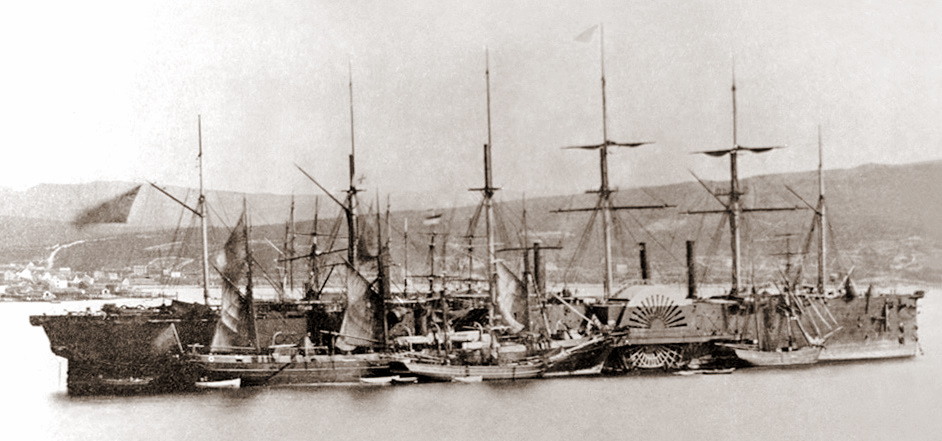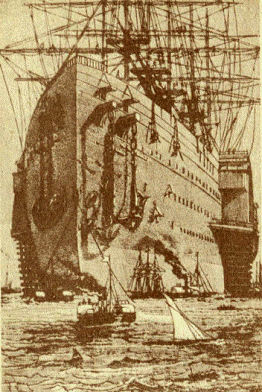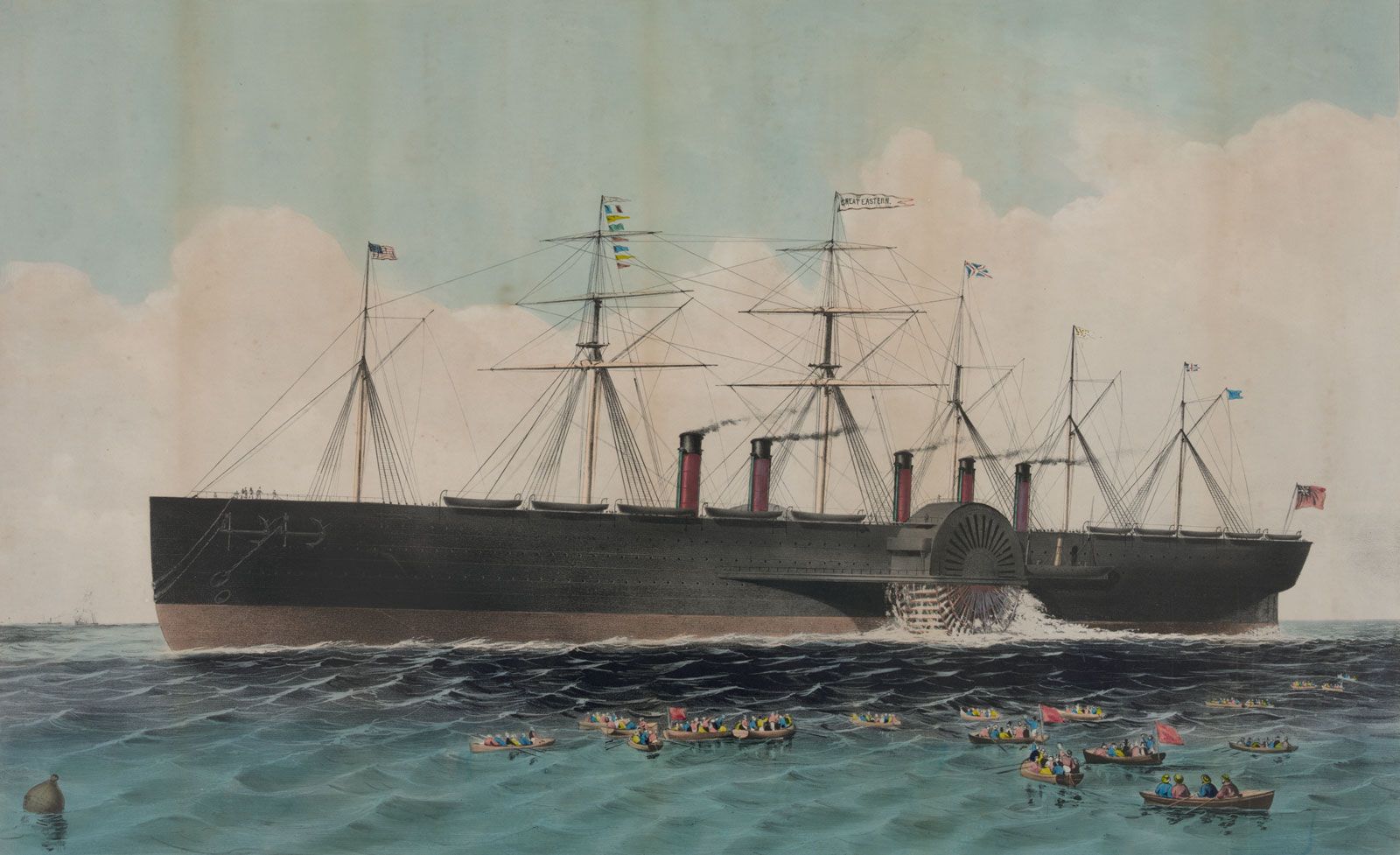The SS Great Eastern, an iconic iron steamship designed by the renowned engineer Isambard Kingdom Brunel, revolutionized maritime travel in the 19th century. Launched in 1858 on the River Thames in London, she was a remarkable feat of engineering that showcased the technological advancements of her time.
Design and Specifications
The Great Eastern was notable for its innovative design and massive size. It was constructed using iron and featured a unique combination of propulsion systems, including:
- Sail Power: The ship was equipped with large sails, allowing it to harness wind energy.
- Paddle Wheels: Two massive paddle wheels provided additional thrust.
- Screw Propeller: A screw propeller further enhanced the ship’s maneuverability and speed.

Key Specifications:
- Length: 692 feet (211 meters)
- Beam: 83 feet (25 meters)
- Displacement: 32,000 tons
- Capacity: Designed to carry 4,000 passengers on voyages from England to Australia without the need for refueling.
Historical Significance
Upon her launch, the SS Great Eastern claimed the title of the largest ship ever built, a record she held for decades. Her design aimed to revolutionize transcontinental travel by drastically reducing journey times across the Atlantic Ocean.

Maiden Voyage Challenges
Despite her ambitious design, the Great Eastern faced significant challenges during her maiden voyage. Technical failures, financial difficulties, and operational issues plagued her early years. These setbacks highlighted the limitations of contemporary maritime technology and navigation practices.

Technological Innovations
The Great Eastern introduced several groundbreaking innovations in shipbuilding and safety:
- Double Hull: One of the first ships to incorporate a double hull, providing enhanced safety and buoyancy.
- Telegraph Cable Laying: She played a crucial role in laying the first transatlantic telegraph cable, connecting Europe and North America, thus marking a significant advancement in global communications.

Legacy
Though the SS Great Eastern was ultimately deemed impractical for regular passenger service and was retired, her impact on maritime engineering was profound. She paved the way for future advancements in ship design and safety practices.
Today, the Great Eastern is remembered not only as a symbol of Victorian ingenuity but also as a testament to the ambition and spirit of exploration that characterized the era. Her story continues to inspire engineers and maritime enthusiasts alike, highlighting the potential of innovation in overcoming challenges.
